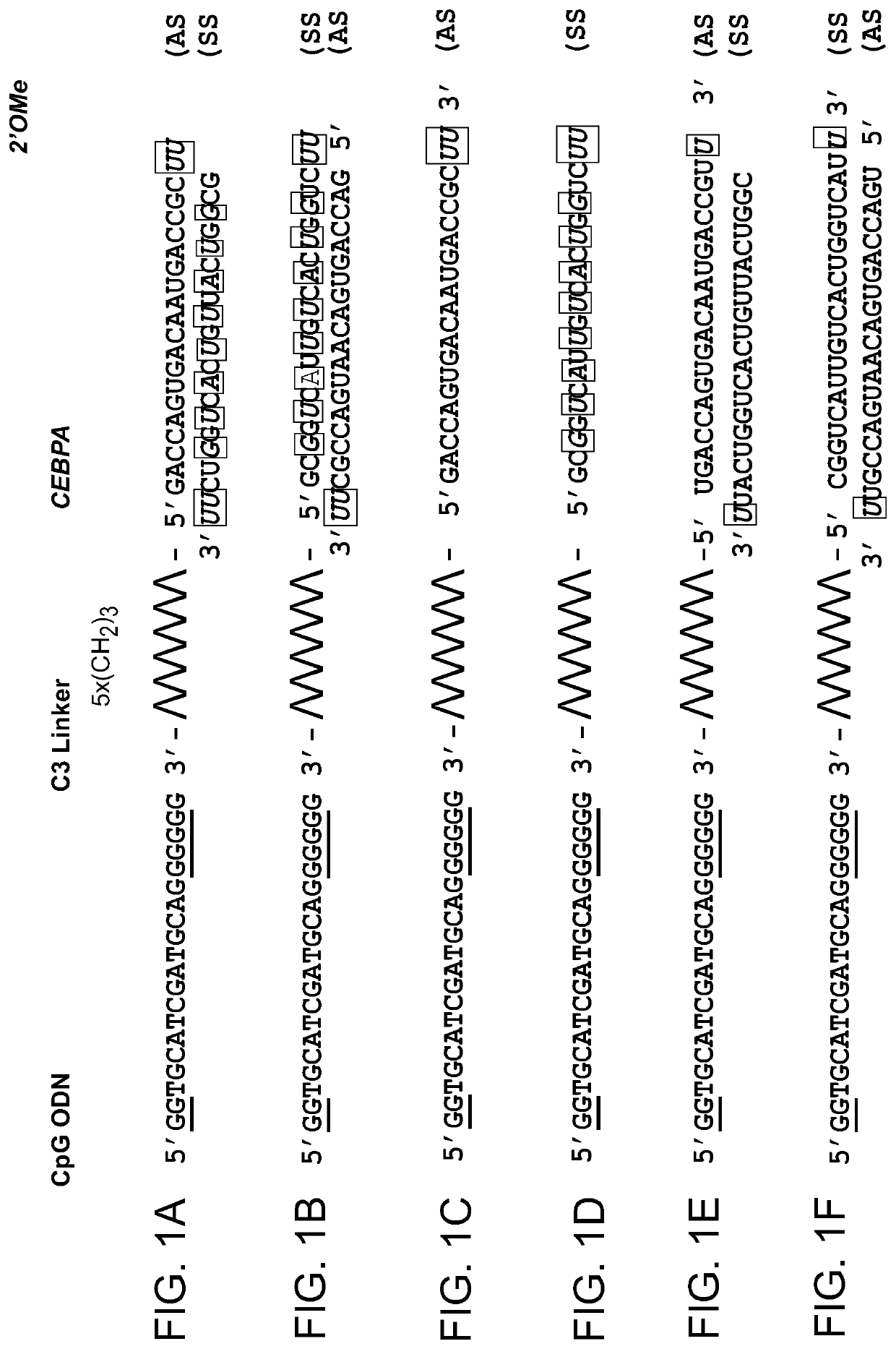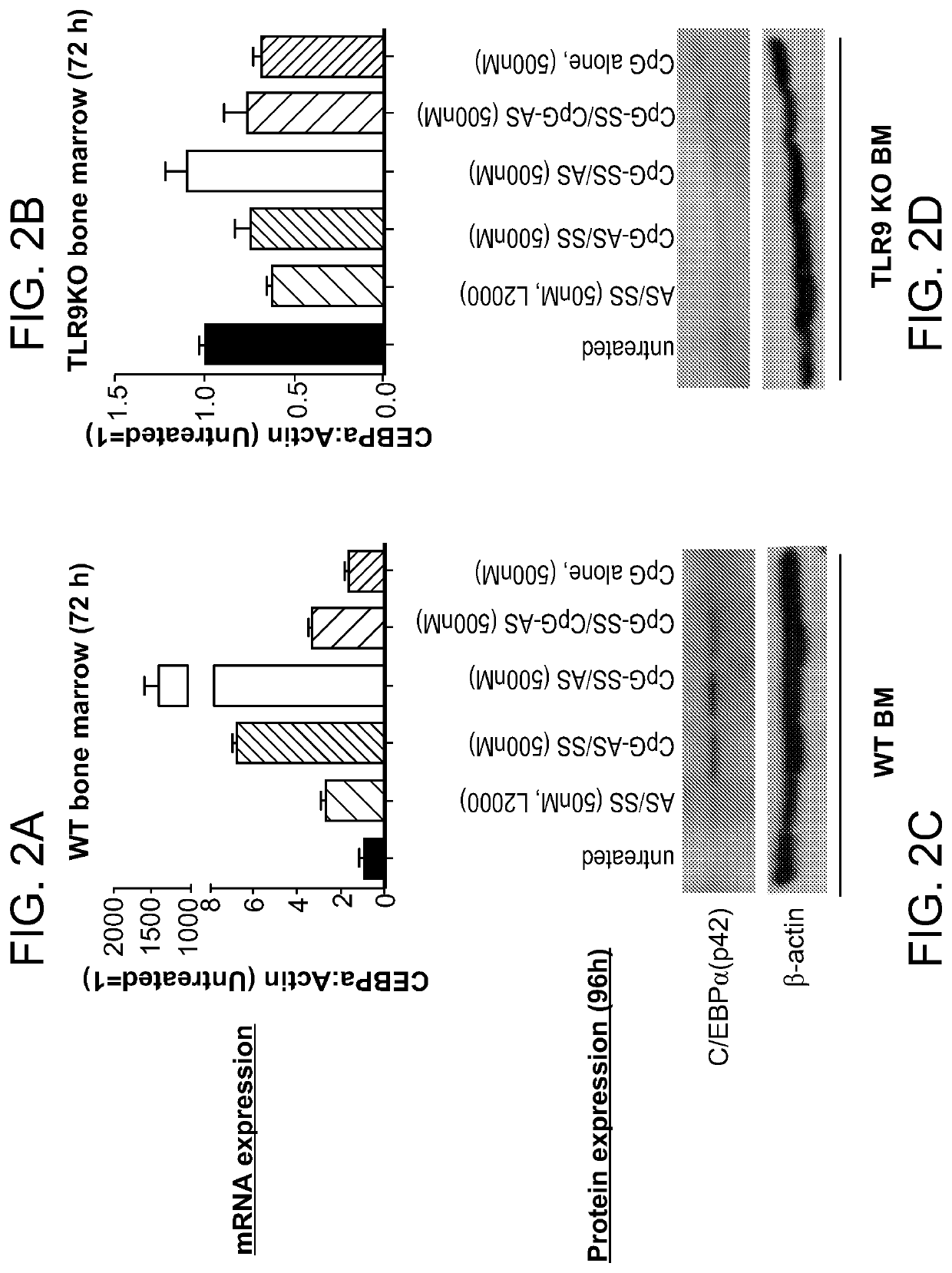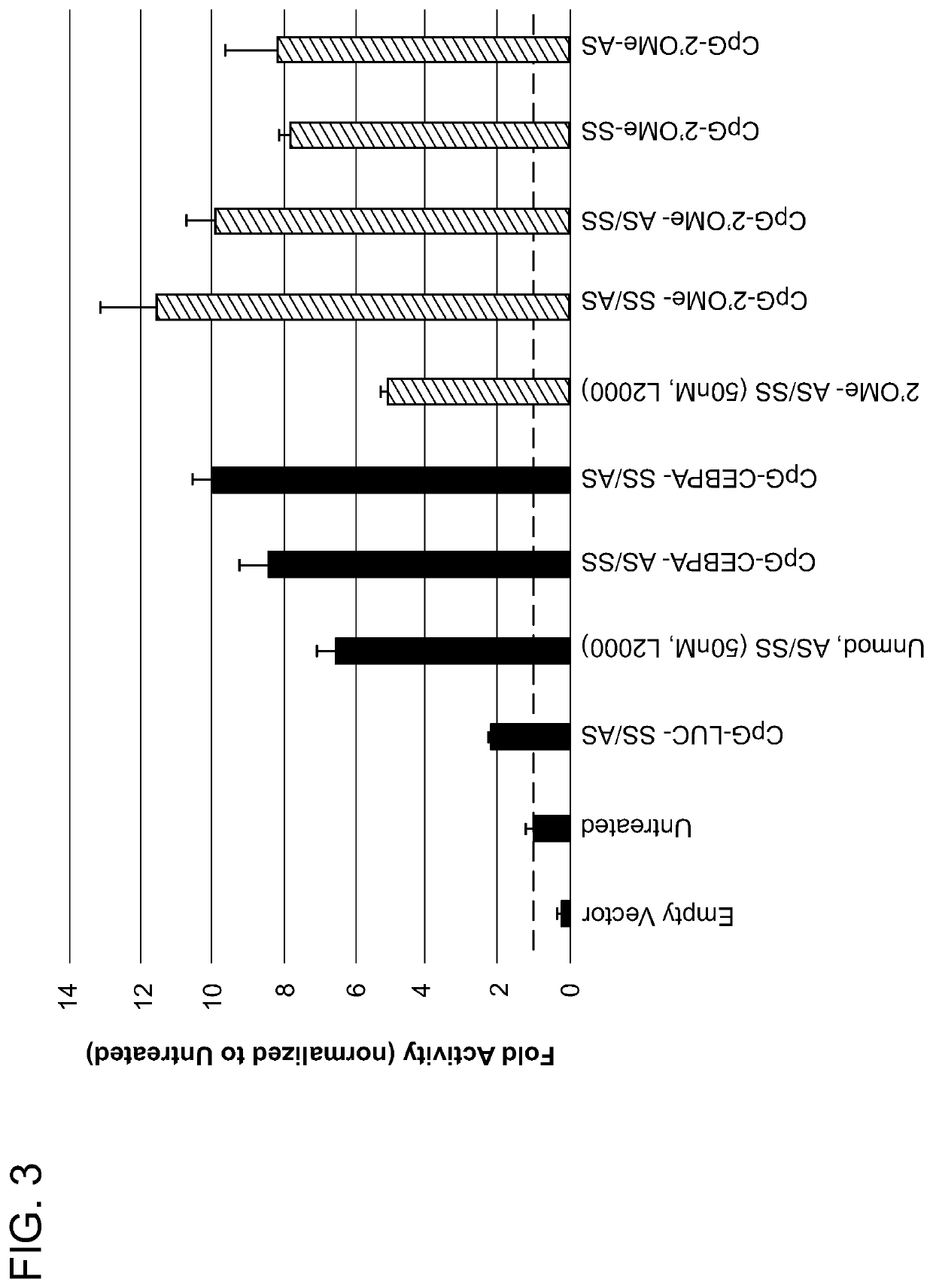Compounds and compositions including phosphorothioated oligodeoxynucleotide, and methods of use thereof
a technology of phosphorothioated oligodeoxynucleotide and compound composition, which is applied in the direction of drug composition, immunological disorders, genetic material ingredients, etc., can solve the problems of complex targeting of stat3 and other transcription factors, limited effect of anti-stat3 technology, and non-pharmacologic approaches
- Summary
- Abstract
- Description
- Claims
- Application Information
AI Technical Summary
Benefits of technology
Problems solved by technology
Method used
Image
Examples
example 1
and Methods
[0255]CpG-CEBPα-saRNA Uptake.
[0256]1×105 cells were incubated in 500 μl media with indicated saRNA (500 μM, final concentration). 3 h later, cells were washed with PBS twice. PBMCs were stained with anti-CD14 and anti-CD19 antibodies to assess uptake by different cell types. Cy3 uptake level was analyzed by flow cytometry.
[0257]CpG-saRNA(-Cy3) Localization in DU45.
[0258]1×105 DU145 cells were plated on cover slips in a 24-well plate. When cells were ˜60% confluent, Cy3-labeled CpG-saRNA conjugates were added to the culture at final concentration 500 μM. 2 h or 24 h post transfection, cells were gently washed with PBS with 1 mM MgCl2 and 0.1 mM CaCl2 twice and fixed with 0.25 ml 2% paraformaldehyde for 20 min at room temperature. Cells were then washed once with PBS with 1 mM MgCl2 and 0.1 mM CaCl2 and permeabilized within 0.1% Triton X-100 for 10 min at room temperature. Cells were then washed with PBS, stained using 500 ng / ml Hoechst33342 and mounted in 10 μl VECTASHIELD...
example 2
ring Process of the CpG-saRNA Synthesis
[0284]CpG-CEBPA saRNA (SS, sense strand) and CEBPA saRNA (AS, antisense strand) were synthesized using a cycle consisting of four steps as described in the following sections. After the complete synthesis, deprotection, purification and desalting of CpG-CEBPA saRNA (SS) and CEBPA saRNA (AS), the two components were annealed to produce the drug product CpG-CEBPA saRNA (SS / AS).
[0285]The starting point of the synthesis was a protected nucleoside linked via its 3′-oxygen to a polystyrene-based solid support. Nucleoside phosphoramidite chemistry was used for this synthesis. The synthesis cycle consisted of the following four steps:[0286](1) Deprotection of the 5′-hydroxyl group (Detritylation),[0287](2) Coupling of nucleotide phosphoramidite to the 5′-hydroxyl group,[0288](3) Capping of unreacted 5′-hydroxyl groups[0289](4) Oxidation* *Step (4) can be substituted with a sulfurization step for the synthesis of phosphorothioated oligonucleotides.
[0290...
example 3
CpG-STAT3ASO as an Inhibitor of Tumorigenic and Immunosuppressive Signaling for Metastatic Prostate Cancer Immunotherapy
Cancer Immunotherapy Targeting STAT3
[0316]The STAT3 transcription factor is a multifaceted oncogene and a master regulator of immunosupression commonly activated in human cancers. Extensive evidence suggest that tumors, such as advanced prostate cancers, critically depend on STAT3 for their survival, vascularization and metastasis, whereas normal cells do not (Mora, L. B. et al. Cancer Res 62, 6659-66 (2002), Dhir, R. et al. Prostate 51, 241-6 (2002), Lee, S. O. et al. Prostate 60, 303-9 (2004), and Hedvat, M. et al. Cancer Cell 16, 487-97 (2009)). In prostate cancers, STAT3 activation results in tumor progression towards hormone-refractory / castration-resistant prostate cancer (CRPC) phenotype and poor patients' survival. STAT3 activity is often triggered by cytokines released in response to stress and inflammation, downstream from Toll-like receptor (TLR) and NF-κ...
PUM
| Property | Measurement | Unit |
|---|---|---|
| volume | aaaaa | aaaaa |
| mass gain | aaaaa | aaaaa |
| mass gain | aaaaa | aaaaa |
Abstract
Description
Claims
Application Information
 Login to View More
Login to View More - R&D
- Intellectual Property
- Life Sciences
- Materials
- Tech Scout
- Unparalleled Data Quality
- Higher Quality Content
- 60% Fewer Hallucinations
Browse by: Latest US Patents, China's latest patents, Technical Efficacy Thesaurus, Application Domain, Technology Topic, Popular Technical Reports.
© 2025 PatSnap. All rights reserved.Legal|Privacy policy|Modern Slavery Act Transparency Statement|Sitemap|About US| Contact US: help@patsnap.com



